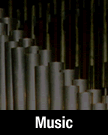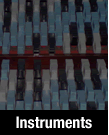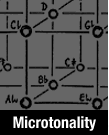The first persons to use logarithms for calculation of interval sizes were
Bonaventura Cavalieri (1639), Juan Caramel de Lobkowitz (1647), and Lemme
Rossi (1666). Also Christiaan
Huygens was among the first to do this. Earlier calculations of equal
intervals sizes, like those of Simon
Stevin (1585) and Marin Mersenne (1636) were done by square and cubic roots.
The logarithm, invented by John Napier in 1614, is a mathematical
operation that turns a multiplication into an addition, and by the same
definition, raising to a higher power into multiplication. Because stacking two
intervals involves multiplication of frequency ratios, this is equivalent to
addition of the logarithmic measures of these ratios.
See also Xenharmonic Wiki: Interval size measure.
- cent: 1/1200 part of an octave
 Defined by Alexander John Ellis (1814-1890) (see photo) in 1884 and presented
in the article "The Musical Scales of Various Nations" as well as in the
appendix of his English translation of Hermann von Helmholtz' book Die Lehre
von den Tonempfindungen als physiologische Grundlage für die Theorie der
Musik. One cent is one hundredth part of the semitone in 12-tone
Equal Temperament, a centisemitone. The frequency ratio represented by one cent
is the 1200th root of 2. So the 12-tET whole tone is 200 cents, the minor third
300 cents, the major third 400 cents, etc. Rounding to the nearest cent is
sufficiently accurate for practical purposes. Cents are the most universally
used interval measure. They have the advantage that familiar intervals have an
easily rememberable value. Ellis, whose real name was Sharpe, is also regarded
as the founder of the field of ethnomusicology. He invented cents originally
for the purpose of expressing non-Western scales.
Defined by Alexander John Ellis (1814-1890) (see photo) in 1884 and presented
in the article "The Musical Scales of Various Nations" as well as in the
appendix of his English translation of Hermann von Helmholtz' book Die Lehre
von den Tonempfindungen als physiologische Grundlage für die Theorie der
Musik. One cent is one hundredth part of the semitone in 12-tone
Equal Temperament, a centisemitone. The frequency ratio represented by one cent
is the 1200th root of 2. So the 12-tET whole tone is 200 cents, the minor third
300 cents, the major third 400 cents, etc. Rounding to the nearest cent is
sufficiently accurate for practical purposes. Cents are the most universally
used interval measure. They have the advantage that familiar intervals have an
easily rememberable value. Ellis, whose real name was Sharpe, is also regarded
as the founder of the field of ethnomusicology. He invented cents originally
for the purpose of expressing non-Western scales.
In a different form, this measure was invented earlier by Heinrich Bellermann
(1832-1903), namely the logarithm with base twelfth root of 2, which has a
size a hundred times larger than a cent, the same size as an equal tempered
semitone. Contrary to cents, it was meant to be used for Western classical
music. This measure was also endorsed by Paul von Jankó. Bellermann received
little acknowledgement for it, because people adopted Ellis's cents much more
enthusiastically. It goes back to Isaac Newton, who also expressed intervals
in terms of 1/12 of an octave in 1665.
- centitone: see Iring
- comma
Not a fixed measure as such but often used as an interval unit. The syntonic
(Didymic) and Pythagorean (ditonic) commas have almost the same size. In the
past they were often confused and their difference was often neglected.
The word coma is Latin for hair. There are 55.79763 syntonic commas and
51.15087 Pythagorean commas in the octave. Therefore one step in 53-tET is
often named a comma because it's in the middle of them and 53-tET is a very
accurate approximation to 5-limit just intonation scales. The major whole tone
9/8 is 9 commas and the minor whole tone 10/9 is 8 commas. The chromatic and
diatonic semitones are 4 and 5 commas. The 1/53 octave comma was discovered by Jean Galle as reported by Marin Mersenne in 1637.
Nicolaus Mercator gave a more mathematically precise description of it in 1660. This comma has also been
wrongly attributed to William Holder.
In regular meantone temperaments where the tempering of the fifth is expressed
in a fraction of a comma, the comma is the syntonic comma. In
well-temperaments, like Werckmeister's, where the cycle of fifths closes in a
circle, the temperings are usually expressed in fractions of a Pythagorean comma.
The measure 1/55 of an octave is called a Sauveur comma and 1/50 of an octave
could be called a Henfling comma.
- decaméride: 1/3010 part of an octave
Defined by Joseph Sauveur in 1696 as one tenth of an eptaméride.
- Delfi unit: 1/665 part of an octave
Used in Byzantine music theory? Approximately 1/12 part of the syntonic comma
and 1/13 part of the Pythagorean comma.
- demi-heptaméride: 1/602 part of an octave
Defined by Joseph Sauveur in 1696 as one half of an eptaméride.
- diesis (plural: dieses or dieseis)
Like comma, also an interval. The name was used by ancient Greek
theorists like Aristoxenos for several different intervals. Marchettus de
Padua (Marchetto Padoano), in his Lucidarium written in 1317/1318, was
the first to use it as a standard measure. He divided the whole tone in 5
parts, called a diesis. The chromatic semitone (semitonium enharmonicum)
was 2 dieses, the diatonic semitone (semitonium diatonicum) 3 dieses and
another chromatic semitone of 4 dieses was meant for some augmentations like
C-C giving a very high leading tone. See also this
essay.
giving a very high leading tone. See also this
essay.
Later the minor or enharmonic diesis became the difference between an octave
and three pure major thirds. There are 29.22634 of it in an octave. Adriaan Fokker used this name for the step of 31-tone
equal temperament, where it is also equal to 1/5 part of a whole tone, because of
its similar size. This 1/31 part of an octave called normal diesis by Fokker
is a convenient measure in which to express 7-limit just intervals.
- Dröbisch Angle: 1/360 part of an octave
The Angle was proposed by Moritz Dröbisch in the 19th century as a cycle of 360
degrees to the octave. Andrew Pikler has suggested this name in his article
"Logarithmic Frequency Systems" (1966).
- Ellis or El: absolute cent
Not an interval measure, but a logarithmic absolute pitch measure. Proposed by
Robert Stuckey and described in the paper Ellis
at Belfast by Jeremy Montagu. It's the number of cents relative to the 64-foot C
(16.3516 Hz), with the number of octaves written as a subscript in front of the number
of cents. For example the A at 440 Hz is shown as 4900. The abbreviation
is El, as Hertz are abbreviated to Hz.
- eptaméride or heptaméride: 1/301 part of an octave
Both spellings used by Sauveur. See méride and savart.
Sauveur's rule to find the number of eptamérides of intervals smaller than 7/6
is as follows: multiply the difference of numerator and denominator with 875
and divide by the sum of numerator and denominator and round the result to the
nearest integer. This is known as the bimodular method of approximating
logarithms and can be used for other measures as well.
- farab: 1/144 part of an octave
Measure proposed by al-Farabi in the 10th century, from Mehdi Barkeshli,
"Perfect scale of Farabi and his proposed scales", Iranian music, a collection of articles.
A decifarab is 1/10th of a farab unit, with the advantage that 1440 is a number
with many divisors.
- flu: 1/46032 part of an octave
Measure proposed by Gene Ward Smith for use with (nano-)temperaments. The Pythagorean
comma is nearly 900 flus (899.9259), the syntonic comma 825 (824.9812) and the schisma
75 flus (74.94472), alas not divisible by 2.
It's an alternative to the Temperament Unit which, although used with 5-limit
temperaments, is not 5-limit consistent,
whereas flus measure intervals consistently up to the 9-limit.
- Grad (degree of tempering): 1/12 part of a Pythagorean comma, 1/613.810469983 part of an octave
One Grad is the difference between
a pure fifth of 1.95500086539 cents and the 12-tET fifth of 700.0 cents and makes
it a useful measure to describe temperings in a well-temperament. The name
comes from Andreas Werckmeister (1645-1706) who used it to denote different
divisions of a comma. It has a negligible difference to 1/11 part of a syntonic
comma. Jan van Biezen calls this measure a Werckmeister, symbol Wm.
Organ builders sometimes use this symbol, and approximate its size by 2 cents.
Another useful property is that the minor diesis is almost exactly 21 Grad
(21.002). So the tempering of the major third in 12-tET is very close to 7 units.
And likewise that of the major sixth in 12-tET very close to 8 units.
Deviations from equal temperament of three consecutive major
thirds when expressed in Grad always add up to 21.
This measure was also used by Neidhardt and Sorge and later by Mark Lindley in their temperament diagrammes.
A Grad is slightly larger than a schisma, 1.000655 times it.
The 1/21 part of a minor diesis is 1.000094 Grads.
- Harmos: 1/1728 part of an octave
A twelve-based measure suggested by Paul Beaver: 1728 is 123.
In the 1960s he asked John Chalmers to compute a table of Harmos, which he did
later in decimal and duodecimal notation.
- Hekt: 1/1300 part of a pure twelfth
Defined by Heinz Bohlen as the hundredth part of a step of the equal tempered
version of the Bohlen-Pierce scale: the 13th
root of 3/1. Hekt are therefore the BP analogon to
cents. See H. Bohlen, "13-Tonstufen in der Duodezime", Acustica
vol. 39, 1978. There are 820.2086796 Hekt to the octave.
- imp: 1/31920 part of an octave
Able to accurately express intervals up to 41-limit. Also 1/1680th part of a
19-tET step.
- iota: 1/1700 part of an octave
Proposed by Margo Schulter on the Tuning List in 2002 and indicated by the
Greek letter iota. The classic chromatic semitone 25/24 for example is 100.12
iotas. It's useful for comparing just intervals with 17-tone equal tempered ones.
- Iring: 1/600 part of an octave
The Iring unit was defined by Widogast Iring in his 1898 Die reine Stimmung
in der Musik. He noted that the twelfth part of the Pythagorean comma and
the schisma have almost the same size, both about 1/614 part of the
octave. To get round numbers, he took for this size one 600th part of an
octave. The size of the major second can then be rounded to 102 and the just
major third to 193. The perfect fifth is 351 Iring units. The size of the Iring
unit is twice the size of the cent. It is also about the smallest
difference in pitch that untrained ears can hear.
The same unit was later defined in 1932 by Joseph Yasser in his book A
Theory of Evolving Tonality by dividing the equally tempered whole tone in
100 parts and calling it the centitone.
- jinn: 1/16808 part of an octave
This measure was proposed by Gene Ward Smith because it is consistent up until
prime number 37 which means rounding to the nearest integer jinn will (usually)
give the correct answers to this limit.
- jot: 1/30103 part of an octave
This name was given by Augustus De Morgan (1806-1871). The 10-base (Briggs)
logarithm of 2 (10log 2) is 0.30102999566 so multiplied by 10000 this
makes almost exactly 30103. Expressing intervals in this measure has the
advantage of being able to calculate interval combinations without using
logarithms, because rounding to the nearest integer jot will (usually) give the
correct answers, at least for the prime numbers up to 11. And the jot values
can be looked up in a 10-base logarithm table. A similar measure is the savart.
- mem: 1/205 part of an octave
This name was chosen by Andrew Aaron Hunt. One mem is equal to 12 minas
and very close to 3 schismas and 4 Hekt. It has good approximations
for the minor third (54), major third (66) and perfect fifth (120).
- méride: 1/43 part of an octave
This name was chosen by Joseph Sauveur (1653-1716) in 1696. The méride
and eptaméride were the first logarithmic interval measures proposed.
Sauveur favoured 43-tone equal temperament because the small intervals are well
represented in it. He had set the comma to one step, then found a range of 2, 3
or 4 steps for the chromatic semitone, corresponding to 31, 43 and 55 tones per
octave. He found 43 to be optimal because 4 steps is almost exactly a 16/15
minor second and 7 steps almost exactly the geometric mean of three 9/8 and two
10/9 whole tones. The chromatic scale contained in 43-tET is virtually
identical to 1/5-comma meantone tuning.
- MIDI Tuning Standard unit: 1/196608 part of an octave
This divides the 12-tET semitone into 214 = 16384 parts which
resolution makes sufficiently accurate tuning of electronic instruments
possible. It's in the MIDI Tuning Specification 1.0.
There are other MIDI tuning units which differ per manufacturer, for example
Yamaha has models tuned in 1/768 or 1/1024 parts of an octave.
There's also the MIDI Pitch Bend message, which can carry the values
-8192 .. 8191, so when the range (which is variable) is the standard range of
+/- 200 cents, then the unit is 1/49152 part of an octave or 0.024414 cents.
- millioctave: 1/1000 part of an octave
Named and used by Arthur Joachim von Oettingen (1836-1920) in his book Das
duale Harmoniesystem (1913). Alfred Jonqičre indicated the millioctave with
the Greek letter mu. It was first used however by John Herschel in the book
which he wrote with George Bidell Airy On Sound and Atmospheric Vibrations
with the Mathematical Elements of Music (1871).
Sometimes millioctaves are propagated as a "value-free" substitute for
cents, not having the 12-tET bias, because the round cent numbers may
lead people to the false belief that the intervals are perfectly in tune.
However using these millioctaves introduces a 10-tET bias, which is a much less
familiar tuning. Often the cent values of just intervals are easy to remember
by their deviation from the 12-tET multiple of 100, for example the pure fifth
is 702 cents, with millioctaves this is harder: 585 millioctaves compared to
583.333. Another advantage of cents is the size of the schisma: almost 2
cents against 1.63 M.O.
- mil or prima: 1/12276 part of an octave
Suggested by Erv Wilson, Gene Ward Smith and Gavin Putland. It's 1/1023 part of 100
cents so close to 1/1000 semitone hence the name mil. It's very close to
three times the size of the Temperament Unit and therefore has the same
kind of advantages. The Pythagorean comma is 240 prima and the syntonic comma 220.
- mina: 1/2460 part of an octave
Named by Dave Keenan and George Secor as an abbreviation of "schismina".
It's 0.487805 cents or 1/205 part of a 100 cent semitone, and selected because
2460-tone equal temperament is consistent
up to the 28th harmonic and its step is therefore a useful measure to express
high-limit just ratios in, and getting very little roundoff errors. They use it
in the development of their Sagittal notation system.
Although for that purpose the exact size of one mina is 1/233 part of a
Pythagorean apotome, or 0.487918 cents or 1/2459.427234 octave.
- morion (plural: moria): 1/72 part of an octave
Defined as 1/30 part of a fourth by the theorist Cleonides around 100 AD for
description of Greek tetrachords. Likewise Aristoxenos used a cipher of 12
parts to a whole tone. This measure is surrounded by controversy, because it's
very unclear what Aristoxenos' measurements exactly are. Moria is Greek
for molecules or small pieces. 72-tone equal temperament is a good approximation
to many just intonation scales because the prime numbers 2, 3, 5, 7 and 11 are
very well represented with deviations not exceeding 3 cents.
- purdal: 1/9900 part of an octave
This measure was suggested by Tútim Dennsuul. It is a highly composite number.
Therefore many tempered intervals can be expressed with high precision in this
measure, but also many just intervals. One Purdal is 4/33 cent.
- harrop: 1/271 part of a pure twelfth
One harrop is 7.0183 cents and there are close to 171 harrops in an octave.
It was proposed by Todd Harrop as an equal tempered equivalent to the quark.
The name quark was chosen by Heinz Bohlen and is derived from a set of supposedly four JI
mini-intervals in the 7 cents range. Two of them have been identified
by him: a = 6.990 cents (3, 4, -5) and b = 7.200 cents (-8, -3, 7). The other two still
need to be determined, but can be replaced
by the small semitone (3, -2, 0). Harrops are practical for showing
interval relationships in the JI BP scale as whole numbers, e.g. the
various JI semitone sizes measure between 19 and 24 harrops. Any
interval and all its enharmonics can be represented by an integer
without rounding inconsistencies. See also The 271-Tone BP Scale.
- savart: 1/301 part of an octave
This measure was defined by Joseph Sauveur (1653-1716) in 1696 as
eptaméride, one seventh part of a méride. Later in the 20th
century its name became savart, after the French physicist Félix Savart
(1791-1841) who also advocated it. In French acoustical literature it's still
used now and then. It is close to 100 times the base-10 logarithm of 2 and
therefore almost as accurate as jots in calculations. So Sauveur proposed
it because 301=7×43 and Savart because 301(.03) =
100×10log 2. Later the name savart was used in the
book The Physics of Music by Alexander Wood to denote the slightly
different value of 1/300 part of an octave. This would make it more practical
for expressing 12-tET intervals. In some literature the savart is taken
to be the 100/30103 part of an octave, making it exactly 100 jots.
- schisma
Like comma, also an interval: the difference between the Pythagorean
and syntonic comma. Because it is so small it is also useful as a measure.
The syntonic comma is 11.008 schismas, the Pythagorean comma 12.008, and the
minor diesis 21.016 schismas, so practically 11, 12 and 21.
There are also temperaments with the fifth tempered by a fraction of a
schisma. There are 614.21264 schismas in an octave. A similar useful unit is
1/612 part of an octave, or one step of 612-tone equal temperament, because this
temperament has extremely accurate approximations of fifth and thirds, and
because 612 is divisible by 12. So one step is also very close to 1/12 of a
Pythagorean comma and the schisma.
- secor: 116.69 cents
More an interval than a measure, it is almost 7/72 part of an octave. Proposed
by George Secor in a 1975 Xenharmonikon article as a generator for
scales which are nearly 11-limit just. See also
this page.
- Temperament Unit: 1/720 part of a Pythagorean comma
This measure was developed by organ builder John Brombaugh to describe very
small intervals as integer values. In this measure, the syntonic comma is
almost exactly 660 Temperament Units and the schisma 60. Because 720 is
divisible by all numbers from 2 to 6 and more, most temperaments can be
described by only integer values. In a well-temperament, -720 TU must be
distributed over the cycle of fifths. One Grad is 60 TU. There are
36828.62820 Temperament Units in an octave. See also this page.
- tina: 1/8539 part of an octave
Named by Dave Keenan and George Secor. It provides good approximations for 41-limit primes except 37.
One schisma is approximately 14 tinas.
- Türk sent (Turkish cent): 1/10600 part of an octave
The tuning of Turkish classical music is Pythagorean which lends itself well to
be approximated by 53-tone equal temperament, see comma. The comma plays
an important role in this music and the smallest step of 53-tET is in between
and approximately the same as the syntonic and Pythagorean comma. The Turkish
theorist Ekrem Karadeniz has made a not very useful further subdivision into
200 parts, making 10600 to the octave. The notation systems of Arel, Ezgi and
Yektâ Bey have special accidentals for the 1/53 octave comma (discovered by Jean Galle) and multiples of it.
- Werckmeister (Wm): see Grad.
- Woolhouse unit: 1/730 part of an octave
Proposed by Wesley S.B. Woolhouse in his 1835 Essay on musical intervals.
This measure was chosen because in 730-tone equal temperament, the basic
intervals of pure fifth of 3/2 and major third of 5/4 (and any combinations)
are very accurate, 427.023 and 235.008 Woolhouse units respectively. See also
this discussion.










 Defined by Alexander John Ellis (1814-1890) (see photo) in 1884 and presented
in the article "The Musical Scales of Various Nations" as well as in the
appendix of his English translation of Hermann von Helmholtz' book Die Lehre
von den Tonempfindungen als physiologische Grundlage für die Theorie der
Musik. One cent is one hundredth part of the semitone in 12-tone
Equal Temperament, a centisemitone. The frequency ratio represented by one cent
is the 1200th root of 2. So the 12-tET whole tone is 200 cents, the minor third
300 cents, the major third 400 cents, etc. Rounding to the nearest cent is
sufficiently accurate for practical purposes. Cents are the most universally
used interval measure. They have the advantage that familiar intervals have an
easily rememberable value. Ellis, whose real name was Sharpe, is also regarded
as the founder of the field of ethnomusicology. He invented cents originally
for the purpose of expressing non-Western scales.
Defined by Alexander John Ellis (1814-1890) (see photo) in 1884 and presented
in the article "The Musical Scales of Various Nations" as well as in the
appendix of his English translation of Hermann von Helmholtz' book Die Lehre
von den Tonempfindungen als physiologische Grundlage für die Theorie der
Musik. One cent is one hundredth part of the semitone in 12-tone
Equal Temperament, a centisemitone. The frequency ratio represented by one cent
is the 1200th root of 2. So the 12-tET whole tone is 200 cents, the minor third
300 cents, the major third 400 cents, etc. Rounding to the nearest cent is
sufficiently accurate for practical purposes. Cents are the most universally
used interval measure. They have the advantage that familiar intervals have an
easily rememberable value. Ellis, whose real name was Sharpe, is also regarded
as the founder of the field of ethnomusicology. He invented cents originally
for the purpose of expressing non-Western scales. giving a very high leading tone. See also
giving a very high leading tone. See also